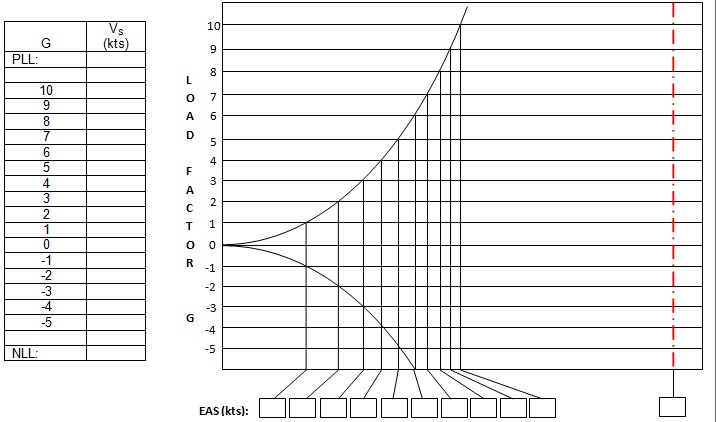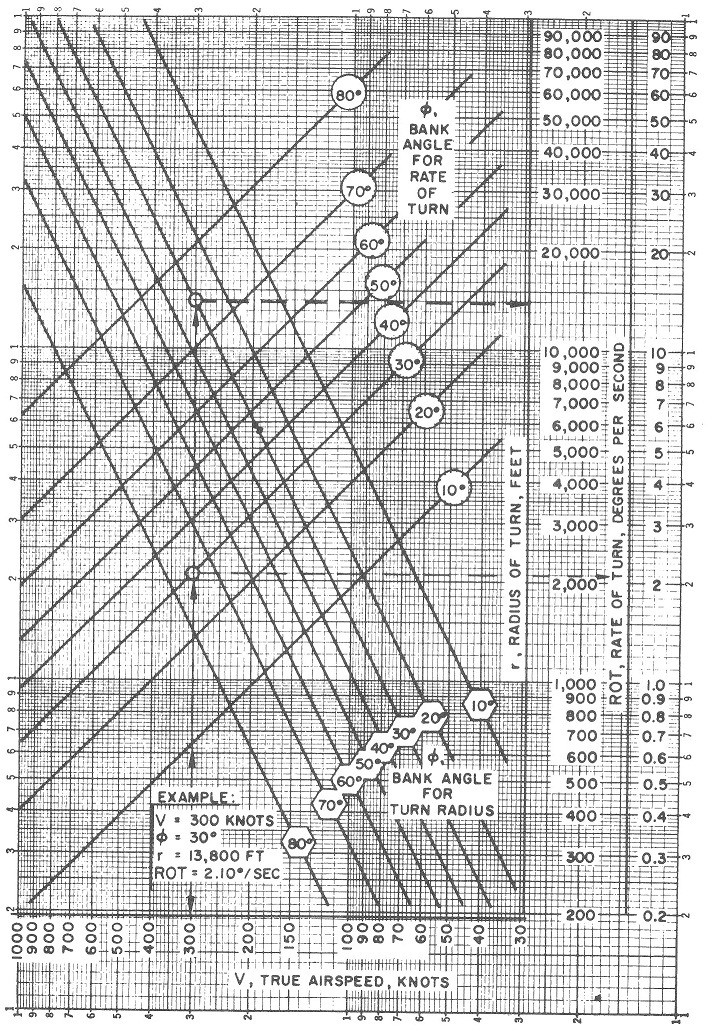Exercise: Maneuvering & High Speed Flight
For this week's assignment you will research a historic or current fighter type aircraft of your choice (options for historic fighter jets include, but are not limited to: Me262, P-59, MiG-15, F-86, Hawker Hunter, Saab 29, F-8, Mirage III, MiG-21, MiG-23, Su-7, Electric Lightning, Electric Canberra, F-104, F-105, F-4, F-5, A-6, A-7, Saab Draken, Super Etendard, MiG-25, Saab Viggen, F-14, and many more).
As previously mentioned and in contrast to formal research for other work in your academic program at ERAU, Wikipedia may be used as a starting point for this assignment. However, DO NOT USE PROPRIETARY OR CLASSIFIED INFORMATION even if you happen to have access in your line of work.
1. Selected Aircraft:
2. Aircraft Gross Weight [lbs]:
3. Aircraft Wing Area [ft2]:
4. Positive Limit Load Factor (LLF - i.e. the max positive G) for your aircraft:
5. Negative LLF (i.e. the max negative G) for your aircraft:
6. Maximum Speed [kts] of your aircraft. If given as Mach number, convert by using Eq. 17.2 relationships with a sea level speed of sound of 661 kts.
For simplification, assume the CLmax for your aircraft was 1.5 (unless you can find a different CLmax in your research).
A. Find the Stall Speed [kts] at 1G under sea level standard conditions for your aircraft (similar to all of our previous stall speed work, simply apply the lift equation in its stall speed form from page 44 to the above data):
B. Find the corresponding Stall Speeds for 2G, 3G, 4G, and so on for your selected aircraft (up to the positive load limit from 4. above), using the relationship of Eq. 14.5. You can use the table below to track your results.
C. Add the corresponding Stall Speeds for -1G, -2G, and so on for your selected aircraft (up to the negative load limit from 5. above) to your table. Assume that your fighter wing has symmetrical airfoil characteristics, i.e. that the negative maximum CL value is equal but opposite to the positive one. (Feel free to use specific airfoil data for your aircraft, but please make sure to use the correct maximum positive and negative Lift Coefficients in the correct places, i.e. CLmax in the positive part and highest negative CL in the negative part of the table and curve, and indicate your changes to the given example.)
Explanation: Making the assumption of symmetry simplifies your work, since the stall curve in the negative part of the V-G diagram becomes a mirror image of the positive side. Notice also that the simplified form of Eq. 14.5 won't work with negative values; however, if using the G-dependent stall equation in the middle of page 222, it becomes obvious that negative signs cancel out between the negative G and the negative CLmax, and Stall Speeds can actually be calculated in the same way as for positive G, reducing your workload on the negative side to only one calculation of the stall speed at the negative LLF, if not a whole number.)
D. Track your results in the V-G diagram below by properly labeling speeds at intercept points. Add also horizontal lines for positive and negative load limits on top and bottom and a vertical line on the right for the upper speed limit of your aircraft at sea level from 6. above. (Essentially you are re-constructing the V-G diagram by appropriately labeling it for your aircraft. Notice that the shape of the diagram and the G-dependent curve relationship is essentially universal and just the applicable speeds will change from aircraft to aircraft. Make sure to reference book Fig. 14.8 for comparison.)

E. Find the Ultimate Load Factor (ULF) based on your aircraft's Positive Limiting Load Factor (LLF). (For the relationship between LLF and ULF, see book discussion p. 226 and Fig. 14.9):
F. Find the Positive Ultimate Limit Load [lbs] based on the ULF in E. above and the Gross Weight from 2.?
G. Explain how limit load factors change with changes in aircraft weight. Support your answer with formula work and/or calculation example.
H. What is the Maneuvering Speed [kts] for your aircraft?
I. At the Maneuvering Speed and associated load factor, find the Turn Radius ‘r' [ft] and the Rate of Turn (ROT) [deg/s].
I) Use Eq. 14.3 to find bank angle ‘Φ' for that load factor (i.e. G). (Remember to check that your calculator is in the proper trigonometric mode when building the arccos).
II) With bank angle from I) above and maneuvering speed from H., use Eq. 14.15 to find turn radius ‘r'.
III) With bank angle from I) above and maneuvering speed from H., use Eq. 14.16 to find ROT. (Make sure to use the formula that already utilizes speed in kts and gives results in degree per second).
J. For your selected aircraft, describe the different features that are incorporated into the design to allow high-speed and/or supersonic flight. Explain how those design features enhance the high-speed performance, and name additional features not incorporated in your aircraft, but available to designers of supersonic aircraft.
K. Using Fig. 14.10 from Flight Theory and Aerodynamics, find the Bank Angle for a standard rate (3 deg/s) turn at your aircraft's maneuvering speed. (This last assignment is again designed to review some of the diagram reading skills required for your final exam; therefor, please make sure to fully understand how to extract the correct information and review book, lecture, and/or tutorials as necessary. You can use the below diagram copy to visualize your solution path by adding the appropriate lines, either via electronic means, e.g. insert line feature in Word or Acrobat, or through printout, drawing, and scanning methods.)

Fig. Flight Theory and Aerodynamics